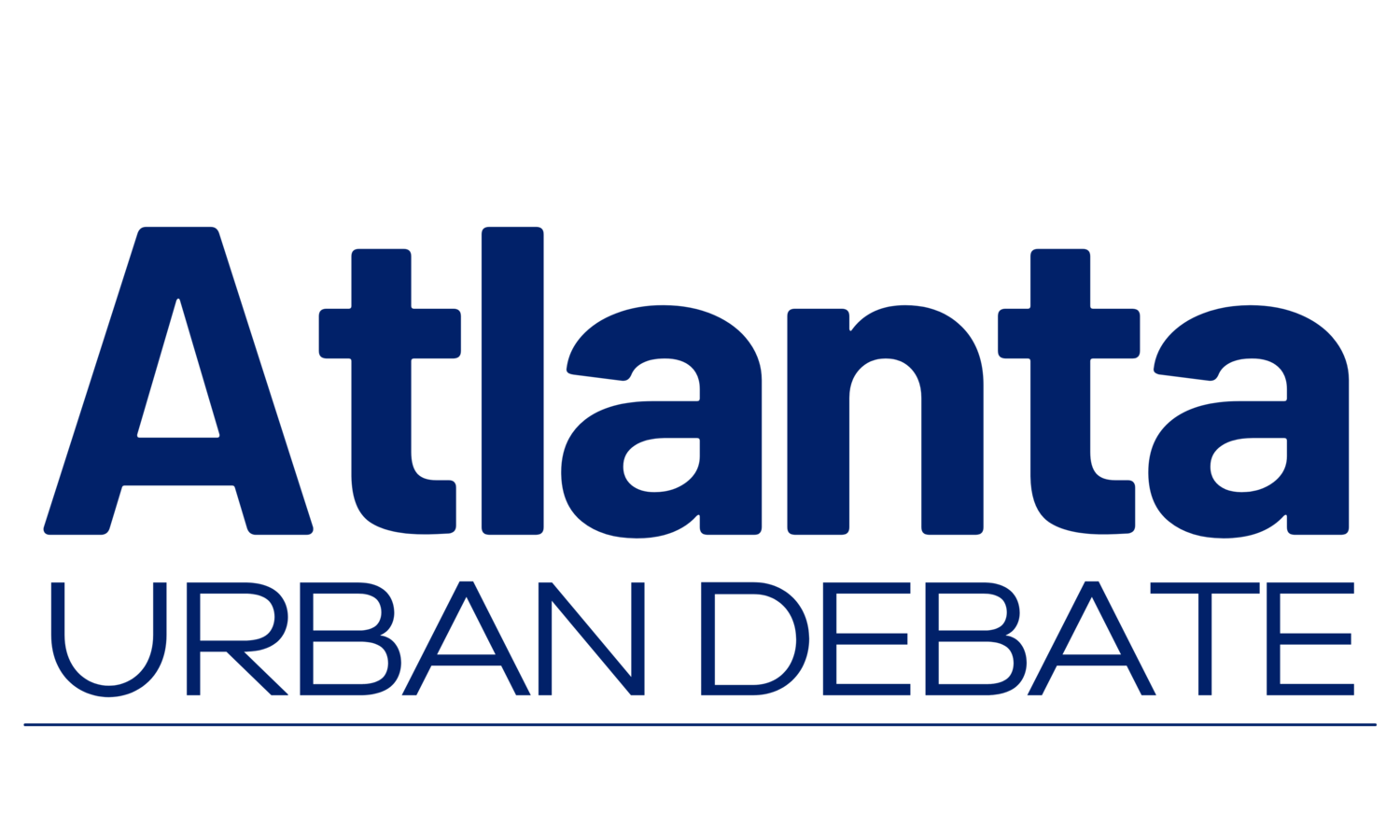The Atlanta Urban Debate League is committed to providing excellent debate education programs, services, and opportunities to diverse students, educators, and members of the community!
High School JV Curriculum Guide
Line-by-Line
In policy debate, you are ultimately telling the judge to vote for your team in order to prevent or resolve an impact. That impact only matters if there is a clear story of how doing/not doing the plan prevents that impact. For the affirmative, this story is told through the case (plan, inherency, harms, solvency). For the negative, it is told through disadvantages (uniqueness, link, impact) and, eventually, counterplans and kritiks. Each impact is a source of offense for one team and has its own story. Line-by-line debate is how we structure arguments related to specific offensive arguments.
The biggest thing to understand about line-by-line debating is that you must answer each and every argument against your offense, while you only need to win one (1) argument against the other team’s offense to take it out.
For the affirmative, this means all negative arguments against your case’s inherency, harms/impacts, and solvency must be answered. For the negative, all arguments against the uniqueness, link, internal link, and impact for disadvantages must be answered.
How to Do Line-by-Line
Each major argument/offensive position (advantage, disadvantage, counterplan, or kritik) will have its own line-by-line debate happening on its own flow.
For the affirmative case/advantages, you will start doing line-by-line debate in the 2AC. For each 1NC argument against the case, going in order, you must make explicit responses using a combination of things like DR. MO., evidence comparison (ABCD), and reading new evidence. To indicate what you’re answering, you can either say something like “Off/Answering 1NC (number) 1…” or “They say…but…” for each argument; whichever way you choose, make sure to answer the arguments in the order they were made in the previous speech. You can make multiple responses answering one argument, as long as you make it clear to the judge when you are answering a new argument.
In the negative block, whichever debater is covering the case does not have to answer everything and can instead pick and choose the stronger 1NC arguments to extend and explain why they take out the case. The 1AR will then need to answer all case arguments from the 2NC/1NR, and the 2AR will need to answer whatever case argument(s) the 2NR chooses to extend.
For the negative, line-by-line starts in the 2NC/1NR and follows the order of the 2AC. It’s just like what the affirmative is doing, but the negative needs to answer all 2AC arguments against the offcase positions. The 1AR should strategically extend the strongest 2AC argument, and the 2NR should be sure to answer whatever argument the 1AR makes.
Making sure you’ve answered all arguments against your offense is why your order should start with your offense and then go to the other team’s arguments. The things you are most worried about and want to have the most time for should always be prioritized.
See “More on Flowing” for JV for details on how to flow line-by-line arguments effectively.
